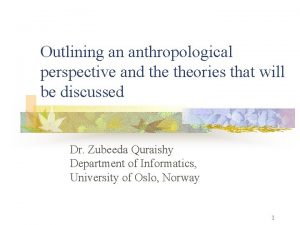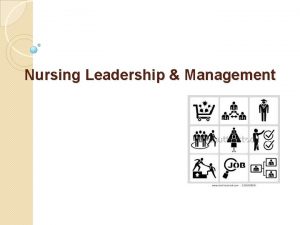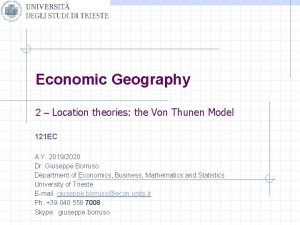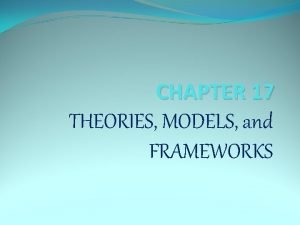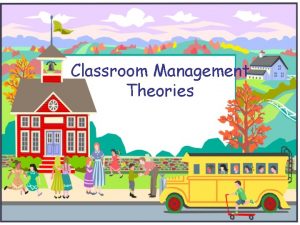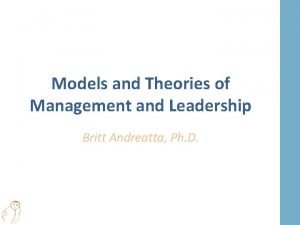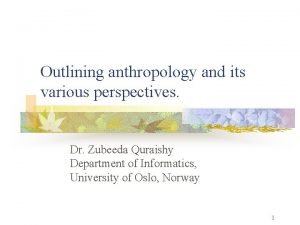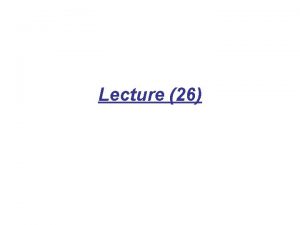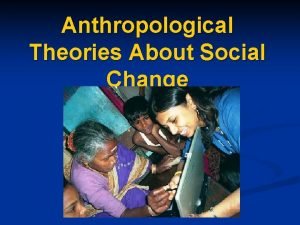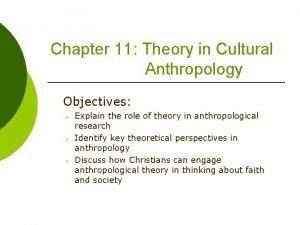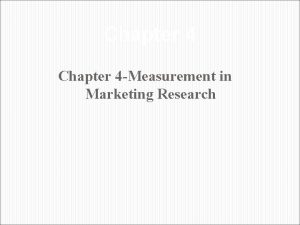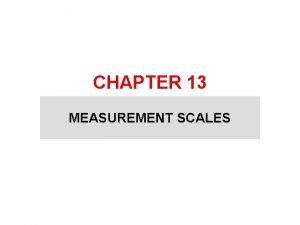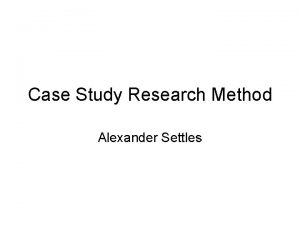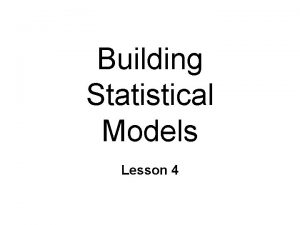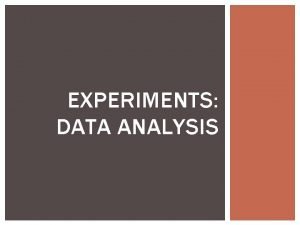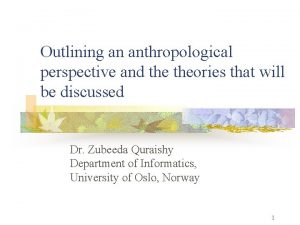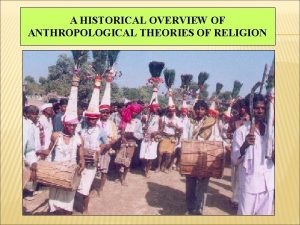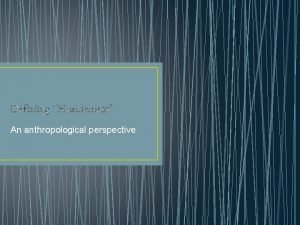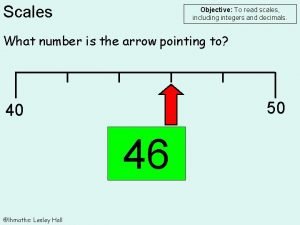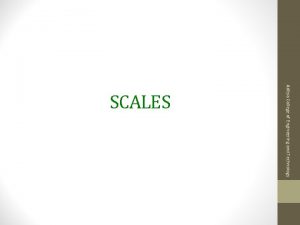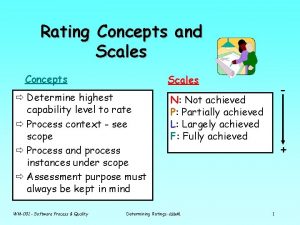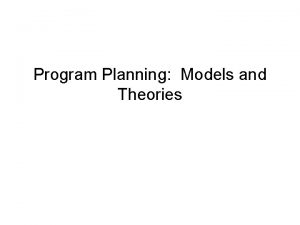Anthropological Research Theories Questions Scales Data and Models






















- Slides: 22

Anthropological Research Theories, Questions, Scales, Data, and Models

Anthropological Research • Research begins with an idea or question about something: – From the literature – Derived from a theory or model – From a discovery of a pattern in the data • The purpose of research is to evaluate the support for that idea

Theories in Anthropology • Linked sets of statements about how people behave and why, e. g. – Zipf’s Law of the Minimum – people minimize their effort – Cultural Ecology – people behave in ways that harmonize with their environment – Behavioral Ecology – natural selection shapes our behavior

Kinds of Theories in Anthropology • • Biology (population genetics) Environment/Ecology (exogenous) Demography (endogenous) Culture (innovation, diffusion, migration, interaction, stratification) • Psychology (individual needs/wants/ strategic action)

Who Questions • • • Who has power? Who has wealth? Who is related to whom? Who were the first agriculturalists? Who were the first Americans/ Australians?

What Questions • • • What do people call their kin? What are the rules for dividing shares? What kind of houses do they build? What was this artifact used for? What disturbances have altered the site?

When Questions • When did the first humans emerge? • When did agriculture begin? • When did Western influences become important? • When was the New World colonized?

Where Questions • Where do people live, work, play? • Where are various activities performed? • Where are people buried?

Why Questions • • • Why do people believe in. . . ? Why do people do. . . ? Why was agriculture invented? Why are pots decorated? Why did states emerge?

How Questions • How was Australia colonized? • How did the Indo European language spread? • How did human culture emerge? • How do people classify. . . ? • How does globalization affect local culture?

Scale • Global view – big picture processes • Temporal view – periods, phases • Regional view – social networks, territories • Local view – neighborhood • Site/Village view – structure, context • Individual view – life history, types

Global View • Climate, soils, topography, ecological zones, isolation, ocean currents • Data on cultures, nations – demography, economy, ideology • Broad patterns between global characteristics and culture

Temporal View • Archaeological time/space charts spanning millennia • Historical timelines spanning centuries • Generational data • Life history data

Regional View • Environmental variability at regional level – rivers, mountains, vegetation, ecological communities • Locations of sites/villages • Characteristics of sites/villages

Site/Village View • Site neighborhood • Location of structures, features, artifact clusters • Household composition • Variability

Household View • Location (within village/site) • Pattern of structures, features, and activity areas • Comparison with other households

Individual View • Physiology, genetic makeup, skeletal characteristics • Life history • Statuses and roles • Decision making • Belief system

Individual (Artifact) View • Group (classification) • Composition • Properties – size, shape, color, quality, wear, breakage, material, Style vs. Function

Models • A model uses a theory to develop expectations about what kinds of patterns we will find in the data • Models use theories and operational arguments to tell us what is important in the data • Statistics can help evaluate the fit between model and data

Evaluation • Must check reasoning from theory to model • Must check operational arguments and proxy measures • Must check data gathering process • Must check role of formation processes

Quantitative Approaches • Estimation and Confirmation – Sampling – Parametric vs. Non-parametric – Response (Dependent) vs. Explanatory (Independent) variables (causal models) • Descriptive – Data Reduction, Pattern Recognition (Exploratory Data Analysis)

Kinds of Data • Scales of measurement – nominal, ordinal, interval, ratio (dichotomy) • Discrete vs. Continuous • Composition/Assemblage (Percentages)
 Anthropological perspective example
Anthropological perspective example Likert leadership theory
Likert leadership theory Von thunen location theory
Von thunen location theory Nursing informatics theories, models and frameworks
Nursing informatics theories, models and frameworks Exclave ap human geography definition
Exclave ap human geography definition Ginott model of classroom discipline
Ginott model of classroom discipline Management models and theories
Management models and theories Anthropology perspective examples
Anthropology perspective examples Anthropological argument
Anthropological argument Mandible x ray positioning towne's
Mandible x ray positioning towne's Infra orbital meatal line
Infra orbital meatal line Waters view
Waters view Anthropological background of bangladesh
Anthropological background of bangladesh Anthropological social change
Anthropological social change Anthropological materialism
Anthropological materialism What is the difference between modals and semi modals
What is the difference between modals and semi modals Measurement marketing research
Measurement marketing research Measurement scales in research
Measurement scales in research Primary scales of measurement in marketing research
Primary scales of measurement in marketing research Reynolds intellectual screening test
Reynolds intellectual screening test Scale data
Scale data Robert yin case study
Robert yin case study Leadership exam questions
Leadership exam questions
